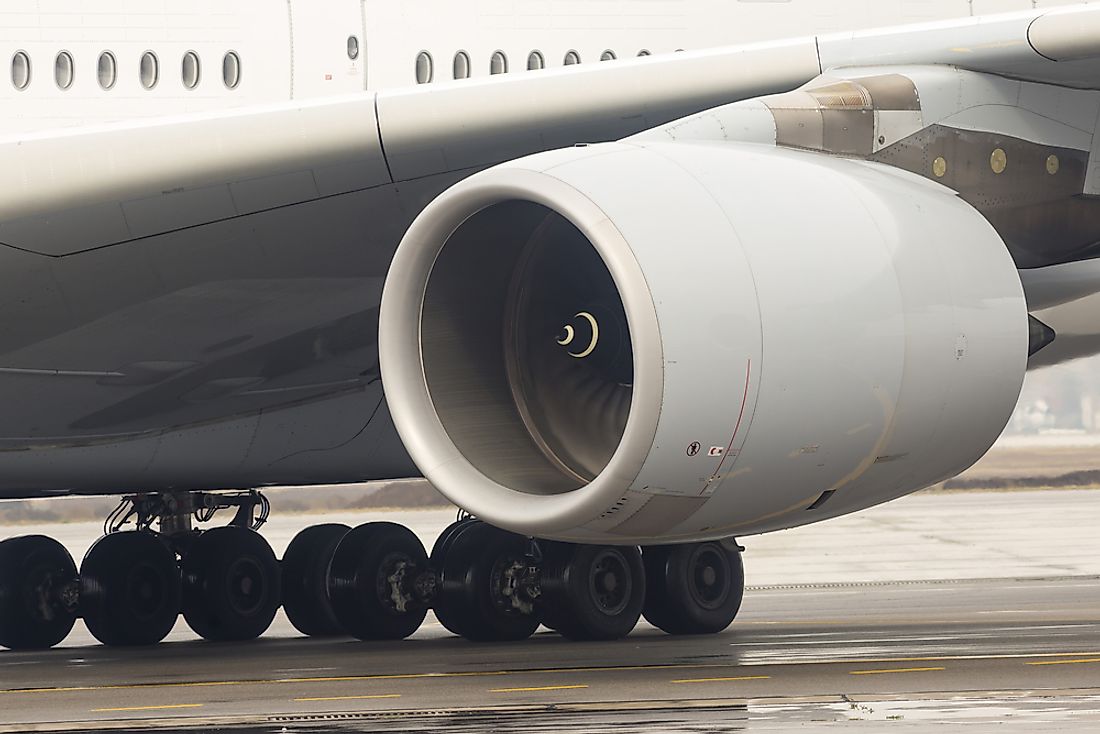The Largest Commercial Aircraft in the World

Ever since the birth of the aviation industry, aircraft engineers have been working on having planes carrying the highest number of passengers possible. The aviation industry has seen tremendous growth in this respect over the past century from having the pioneering Wright brothers’ plane with a capacity of one person to the modern airliners with capacities exceeding 500 passengers. The airliner that holds the current record of highest passenger capacity is the Airbus A380. The Airbus A380 is a four-engine aircraft and is the largest commercial plane in the world. The A380 took the first flight in April 2005 and commercial service began in October 25th, 2007 with Singapore Airlines.
The Largest Commercial Aircraft in the World
Design of the A380
Manufacturing of the various components of the Airbus A380 is handled all over Europe. The engines and wings are manufactured in England, and the fuselage in Germany and Spain. Finally, assembly is done in Toulouse, France. The Airbus A380 is a wide-body aircraft with a usable floor space covering 5,920 square feet spread out amongst upper and lower decks. Despite the expansive size, the aircraft is efficient in fuel consumption and has low fuel usage-to-passengers ratio. The aircraft’s exterior is constructed using carbon fiber and reinforced plastic which is used to minimize the gigantic aircraft’s weight. It requires over 3,600 liters of paint to cover its entire exterior. Airbus A380 consumed so much of the carbon fiber during its initial production that it caused a global shortage. The Airbus A380 uses four engines manufactured by British company Rolls-Royce which was constructed with noise reduction and fuel efficiency as a priority. These engines make the Airbus A380’s cabin quiet compared to other planes. The wings have wingtip fences incorporated to them so as to reduce induced drag as well as reducing wake turbulence.
Facts about the A380
With a weight of about 550 tons, a length of 238.5 feet and a 262-feet wingspan, one might think the gigantic size has an impact on the speed of the A380. However, the A380 has a cruising speed of 560 miles per hour at a cruising altitude of 43,000 feet. The staggering size of the Airbus A380 has forced airports to set up facilities while expanding existing runways to handle the plane. As of 2016, only 20 runways all over the world had the capacity to handle the A380. During the construction of the Airbus A380, 320 miles of wiring was used on a single plane. The plane has a luggage capacity of carrying over 3000 suitcases. The four Rolls-Royce engines on the plane have a maximum thrust of a mind-boggling 34,000 pounds.
Airline Companies with A380s
Since its introduction in 2007, the A380 has attracted a lot of interest from airline companies all over the world with 13 currently having at least one A380 in their fleet. Etihad is a notable example which has 92 planes within its fleet out of an order of 142 planes. Others include Singapore Airlines, Air Emirates, Qantas, Air France, Lufthansa, Korean Air, China Southern Airlines, Malaysia Airlines, Thai Airlines, British Airways, Asiana Airlines and Qatar Airways.
Safety of A380
The Airbus A380 holds the record of being the passenger airliner with the least accidents with only one incident in 2010 involving a Qantas A380 which experienced engine failure but had neither causalities nor injuries on crew or passengers.
The Largest Commercial Aircraft in the World
| Rank | Airline |
|---|---|
| 1 | Singapore Airlines |
| 2 | Air Emirates |
| 3 | Qantas |
| 4 | Air France |
| 5 | Lufthansa |
| 6 | Korean Air |
| 7 | China Southern Airlines |
| 8 | Malaysia Airlines |
| 9 | Thai Airways |
| 10 | British Airways |
| 11 | Asiana Airlines |
| 12 | Qatar Airways |
| 13 | Etihad Airways |











